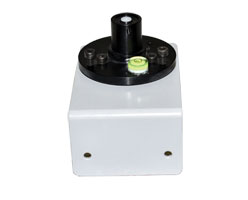
Solar Radiation Sensor
Model: OSR01
The Global Radiation Pyranometer sensor is designed for field measurement of solar radiation in agricultural, meteorological, and solar energy studies.
The Solar Radiation Sensor, or solar pyrometer, measures global radiation, the sum at the point of measurement of both the direct and diffuse components of solar irradiance. It is also used to measure the sunshine duration hours with direct radiation>120W/m2.
The sensors transducer, which converts incident radiation to electrical current, is a silicon photodiode with wide spectral response.
From the sensors output voltage, the console calculates and displays solar irradiance. It also integrates the irradiance values and displays total incident energy over a set period of time.
| Spectral Range | 300 1200 nm |
| Operational Temperature | -40C to +85C |
| Output | 0-25milli volts |
| Measuring Range | 0 to 1750 W/m2 |
| Response Time | 10 s |
| Accuracy | <5% (direct signal for clear sky) |
| Sensitivity | Typically 90 A per 1000 W/m2 |
| Sensor Cable | Shielded cable with Molex connector or custom cable as per user defined connector available |
Used extensively in solar energy studies for site evaluations and monitoring, passive system analysis, irrigation scheduling and other environmental studies.
- Features a silicon photovoltaic detector mounted in a fullycosine-correctedminiature head.
- Can be mounted in any plane without affectingperformance.
- In clear unobstructed daylight conditions comparesfavourably with first class thermopile type Pyranometer,but is priced at a fraction of the cost.
- Spectral response does not cover full range of solarspectrum.
- Includes anodized aluminium base with stainless steellevelling screws and a weatherproof spirit level.
- Should only be used to measure unobstructed daylight(conditions of calibration). Not to be used undervegetation, artificial lights, in green houses, or forreflected solar radiation.
- Crop management
- Sky radiation
- Irrigation control
- Air Pollution Monitoring
- Solar Energy